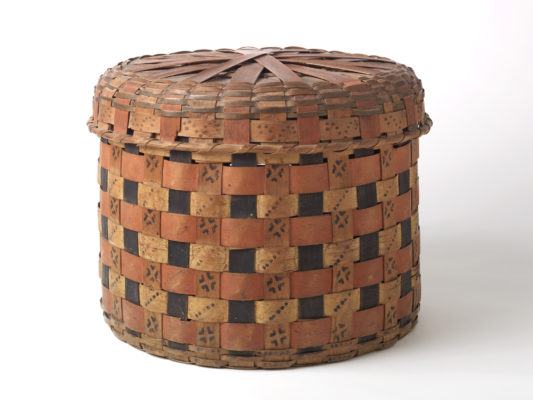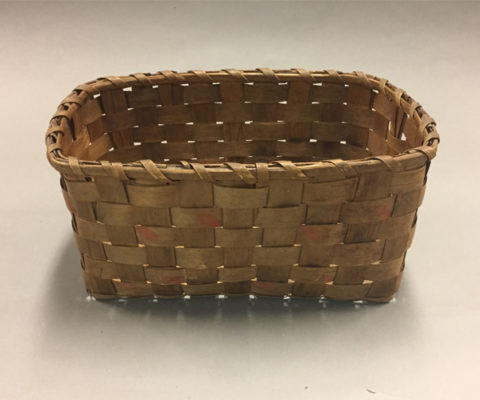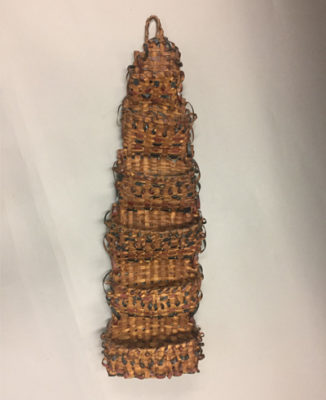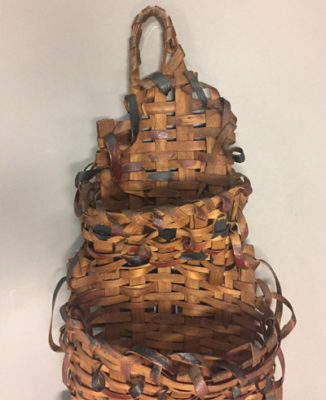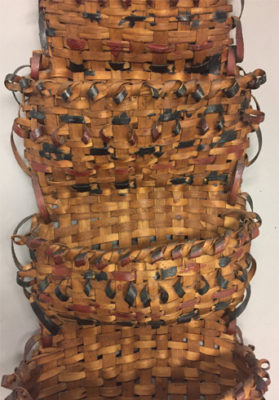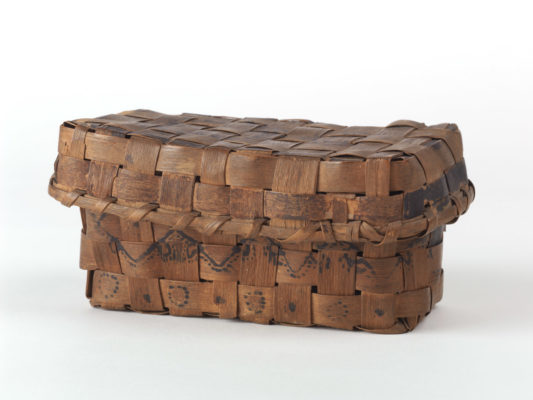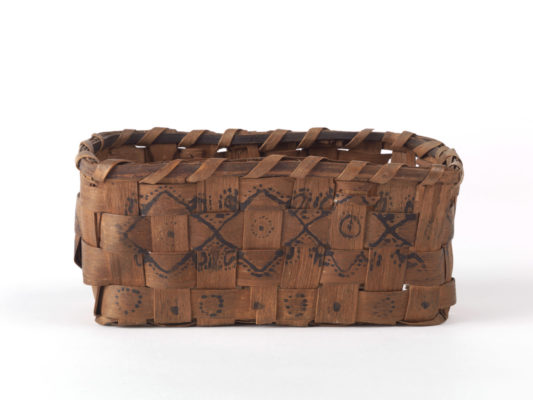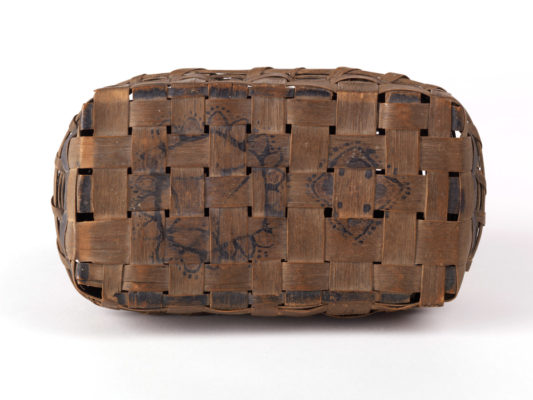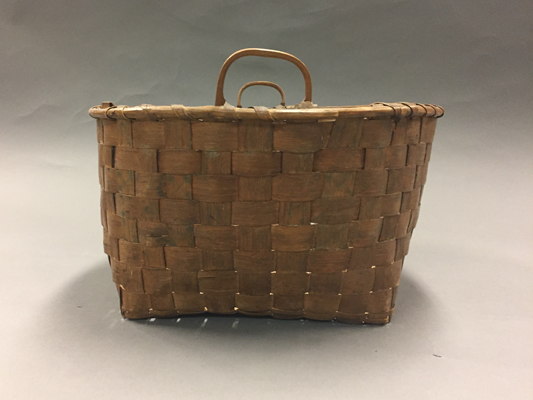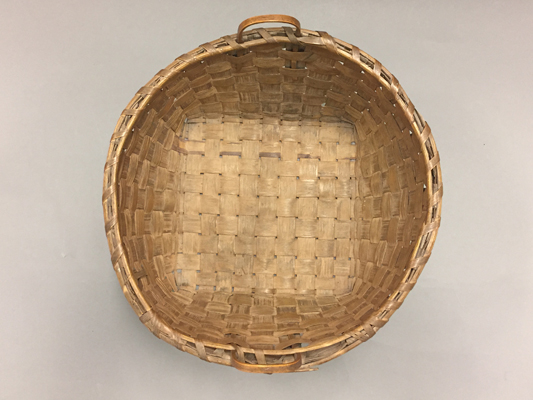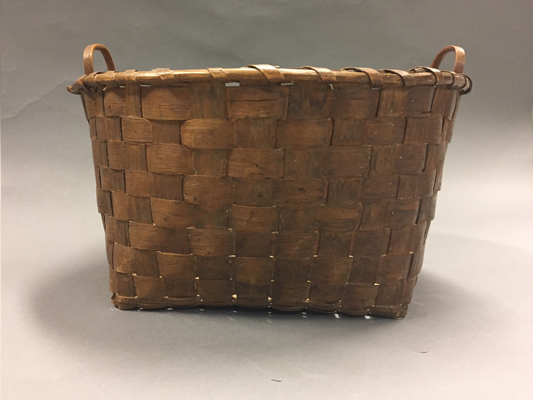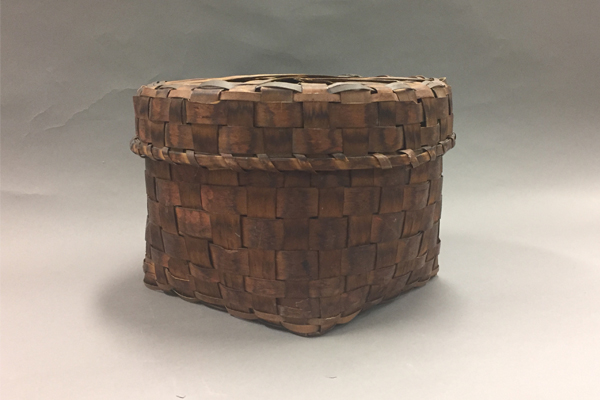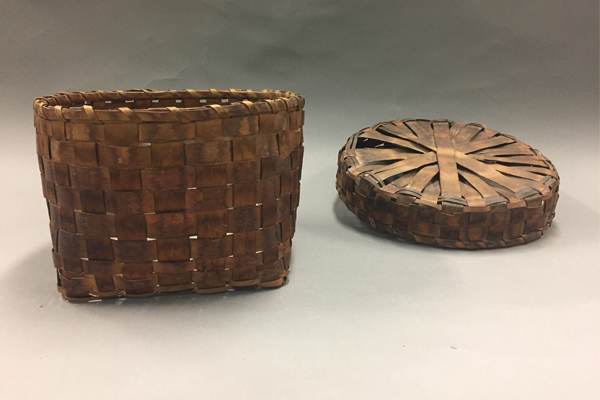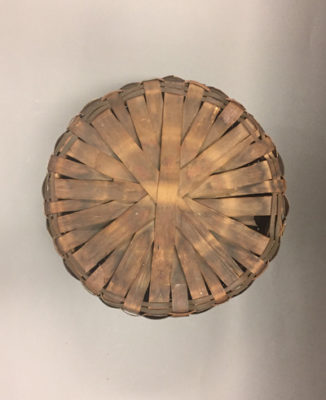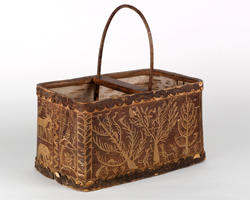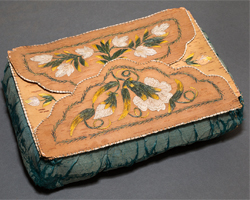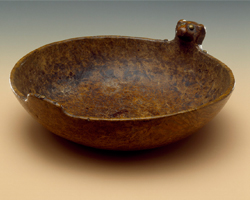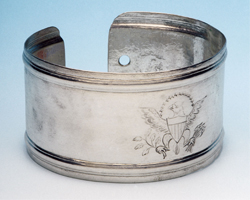Functional Art
Native women throughout North America made a wide variety of decorative storage baskets for non-Natives. They loaded these baskets on their backs and on poles and traveled for miles selling the wares door to door.
Splint basketweaving: how did they make it?
Native basketmakers first separated sections of hardwood into splints. The vertical splints of a basket are called “standards” and the horizontal pieces are called “weavers” or “wefts.” The typical pattern of threading one “weaver” over one “standard” and then under the next is known as “checkerwork” or “checkerboard” weave.
Objects
Bright colors, strong graphics, and a large storage capacity make this piece a perfect example of a decorative and functional Native-made basket. The female maker swabbed the splints with color before weaving them together. Mary Hoyt purchased this basket to store her bonnets. To protect the bonnets from dust, she lined the basket with old letters. Other owners sometimes used local newspaper for lining, which helps us identify where and when they lived.
Bonnet basket
Unknown Native American artist
Eastern North America, possibly Vermont or northern New York; 1820–1850
Wood splint, Spanish brown pigment, laundry bluing, yellow pigment
1959.2610a,b Bequest of Henry Francis du Pont

The woman who made this basket painted the surface with red blossoms and delicate blue leaves, which have now faded to pale pink and green. This basket arrived at Winterthur with a Shaker provenance and has always been called a Shaker product. Recent research shows, however, that the Shakers frequently purchased Native American baskets and resold them to their own customers.
Workbasket
Unknown Pequot artist
Southeastern Connecticut; 1830–1850
Wood splint, laundry bluing, pigment
1962.39 Gift of Mr. and Mrs. Edward Deming Andrews

This wallpocket mimics those that hung in many Victorian parlors to hold letters, keepsakes, and knickknacks. This is an unusually large example, as most Native-made splint wallpockets have just one or two pockets. The decorative curls began to appear on Native baskets made for the tourist trade by the 1860s, most likely to emulate the elaborate surface decoration that was popular at the time. The red and green paint was probably added later.
Basketry wallpocket
Unknown Native American artist, probably Abenaki
Near Montreal, Canada or northern New York; 1880–1920
Hickory splint, oil-based pigment
1965.2002 Bequest of Henry Francis du Pont

The artist who decorated this basket used charcoal mixed with water. The diamond and circle shapes are called “stockades.” The flower-like designs on each end are known as “medallions.” Stockades are images that Native artists used to represent political divisions that occurred within the groups during the early 1800s, when population pressure from Europeans forced them into ever smaller and changing locations. The lid, which covers some of the stockade design on the front and has a different type of design, may have been added at a later date.
Covered storage basket
Unknown Pequot artist
Southeastern Connecticut; 1810–1830
Wood splint, lampblack pigment
1966.1035a,b Bequest of Henry Francis du Pont

This basket, with finely carved wooden handles, has fading, painted rows of bars near the lip and faded blue Xs and trailed designs common on Pequot baskets. A young lady might have purchased this basket to hold her sewing or knitting supplies.
Basket
Unknown Pequot artist
Southeastern Connecticut; 1840–1860
Wood splint, maple wood handles, pigment
1965.2820 Bequest of Henry Francis du Pont

Although this basket has suffered some water damage, the remains of Xs and peach-color stockades are visible. The shape and decoration of this basket denote its Pequot origins. Larger lidded baskets like this one were popular alternatives to hatboxes.
Storage basket
Unknown Pequot artist
Southeastern Connecticut; 1840–1860
Wood splint, pigment
1967.556a,b Bequest of Henry Francis du Pont


